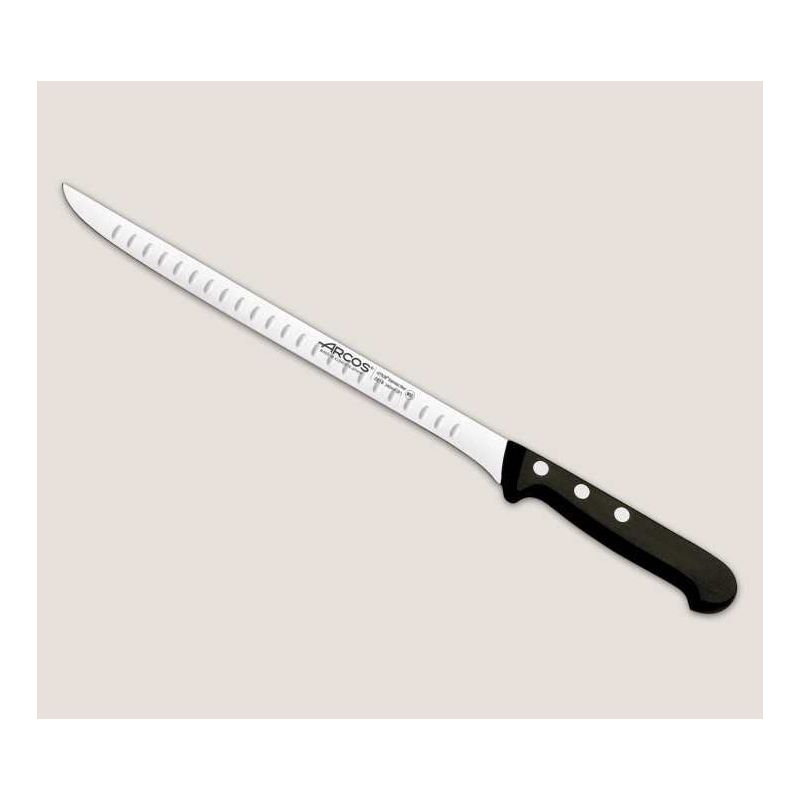Hello, dear gourmets! Today is a special day because we are going to delve into a millenary ritual of our culture: how to cut Iberian ham.
This exquisite gastronomic jewel deserves a respectful and delicate treatment, so grab your ham knife and get ready to learn.
Necessary Tools for Cutting Iberian Ham
Before we get into the art of slicing Iberian ham, we need to talk about the tools. If you try to do this job without the right tools, it’s like trying to paint a picture without brushes. So, here is the essential kit:
- Ham holder: This device will ensure that the ham stays firm while you cut it, offering resistance to your strokes and preventing dangerous slipping. There are several types on the market, choose one that offers stability and comfort.
- Ham knife: Long, narrow and flexible, this knife is the main protagonist in the art of ham slicing. Its design allows you to obtain thin, even slices.
- Paring knife: A knife with a short blade and a fine point will be useful for cutting around the bone and cleaning the piece.
- Sharpening steel: This is a tool that allows you to keep your knives sharp. A sharp knife guarantees precise and safe cuts.
- Protective glove or mesh: This element is vital to avoid accidents and protect your hand from possible cuts.
First Steps: How to Start Slicing an Ibérico Ham
The adventure of how to start slicing an Iberian ham can be a bit intimidating at first, but don’t worry.
Here are the first steps to get you off on the right foot.
Step 1: Placing the ham
To begin, you need to place the ham on the stand in the correct way.
The ham should be hoof side up and, if you are right-handed, it should point to the left. If you are left-handed, to the right. This way, you will have a more comfortable access to the piece.
Step 2: Cleaning the piece
Iberian ham usually comes with a layer of fat and outer rind that has protected the piece during curing. With your sharp knife, you should remove this layer until you reach the fresh meat.
Step 3: First cut
After cleaning the piece, you should make the first cut in the ham. Make a deep cut near the hip bone.
This initial cut will give you a flat base that will allow you to work more comfortably.
The Art and Technique of Cutting Iberian Ham
Once you have prepared your ham, it is time to dive into the fascinating art of cutting Iberian ham.
The Iberian ham is divided into several parts: the maza, the contramaza, the punta and the babilla. Each part has its own peculiarities that you must know in order to make a good cut.
How to cut the Maza
The maza is the juiciest and largest part of the ham. It is, in terms of flavour, the jewel in the crown. To cut it, you should make thin, elongated cuts, parallel to the bone, from top to bottom.
The pieces should be bite-sized, allowing you to appreciate the full richness of flavour in each piece.
Cutting of the Contramaza
Once you’ve finished with the mace, it’s time to tackle the contramaza. To do this, you will need to turn the ham over. The contramaza is smaller and usually more cured than the maza.
The cuts, similar to the maza, will be shorter but just as delicious.
Tip and stifle cuts
The tip, which is the narrowest part of the ham, and the stifle, the area opposite the mace and which contains less fat, are the last parts to be cut.
In both, the cuts should be thicker due to their lower intramuscular fat.
How to Cut Iberian Ham at Home?
The process may seem complicated at first, but the good news is that you can practice and perfect your technique for slicing Iberian ham at home.
With the right tools and following these steps, you will be able to enjoy a good Iberian ham cut by yourself.
Common Mistakes When Carving Iberian Ham
Cutting Iberian ham is an art and, like any art, it requires practice. Here are some common mistakes you should avoid in order to learn how to cut an Iberian ham properly:
- Cutting too thick: Iberian ham is best enjoyed when sliced thinly. A thick cut can result in a rubbery texture and an overly intense flavour.
- Not respecting the direction of the cuts: Cuts should always be made parallel to the bone. If you cut in different directions, you can end up with uneven and difficult-to-eat pieces of ham.
- Not keeping knives sharp: A sharp knife is essential to make precise cuts and avoid accidents. So don’t forget to sharpen your knives before you start.
Delight yourself with your sliced Iberian Ham
Finally, after all the hard work, it’s time to enjoy your sliced Iberian ham. There is nothing that compares to the taste, aroma and texture of a freshly sliced Iberian ham.
Ham is a delight on its own, but it can also enhance any dish, tapa or sandwich.
If you want to learn how to cut ham with a knife, don’t forget to click on our article.
In short, learning how to cut Iberian ham is a skill that requires patience and practice, but the result is undoubtedly a gastronomic delight that is well worth the effort.
So don’t wait any longer and start slicing your own Iberian ham today!







